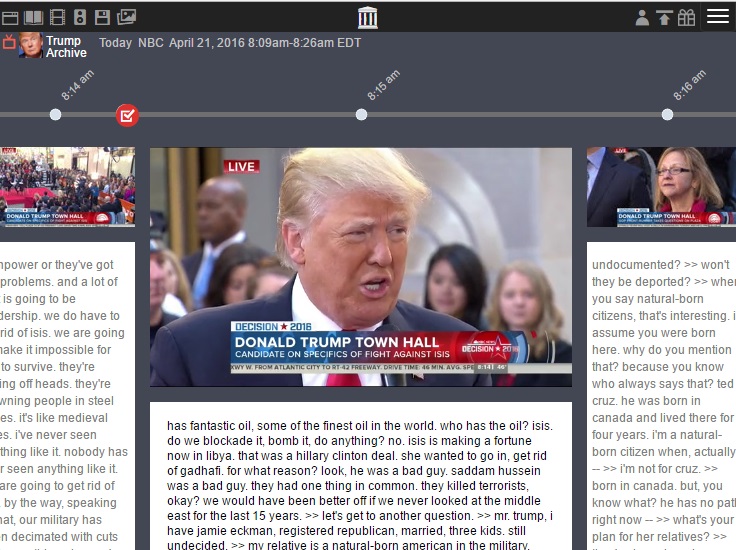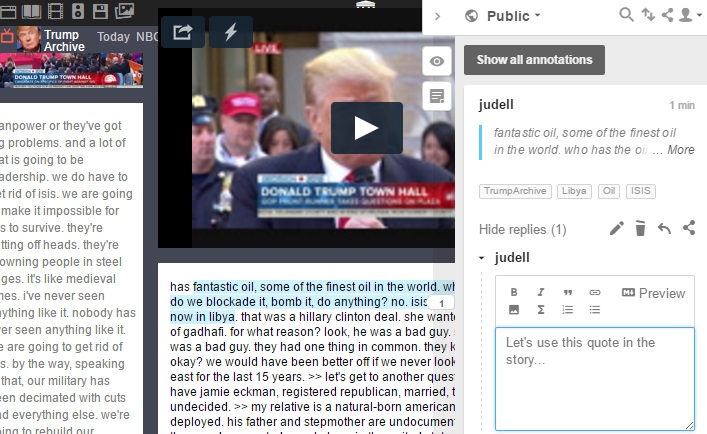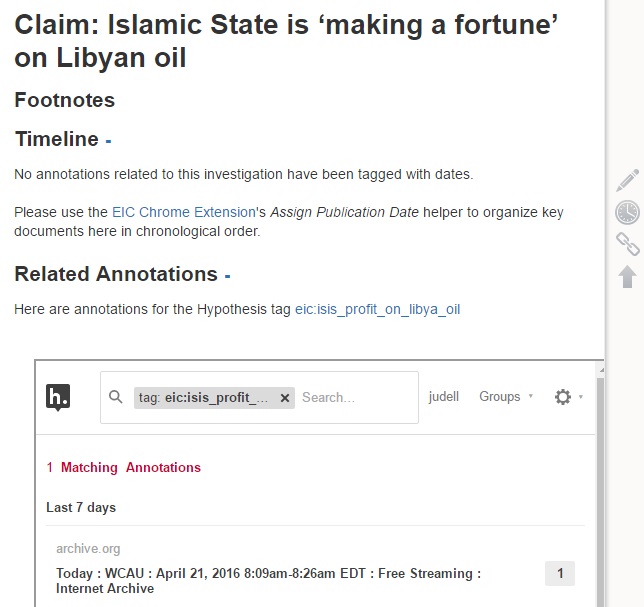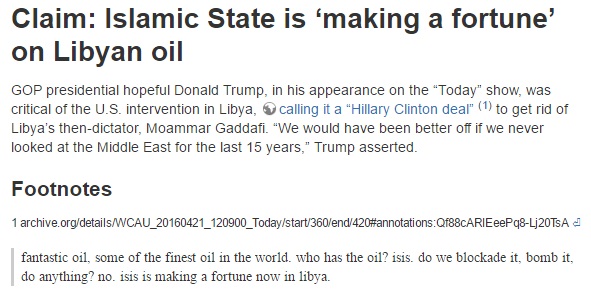Annotating TV News
The Internet Archive’s TV News Archive is a remarkable resource that provides video clips of TV news shows since 2009, text-searchable by means of their closed captions. Annotation of that caption text enables anyone to zoom in on specific moments and language in the TV timeline, bookmark it, and start a conversation linked to text and video. It’s a great way to use TV news as a primary source in education, journalism, and research.
For example, here’s a claim that Politifact rated as four Pinnochios
Right now, Libya, as you know, has fantastic oil, some of the finest oil in the world. Who has the oil? ISIS has the oil. Do we blockade it, do we bomb it, do we do anything? No. ISIS is making a fortune now in Libya.
— Donald Trump, interview on NBC’s Today show, April 21, 2016
And here’s that quote in context at the TV News Archive. That link, which Politifact could have cited (but didn’t), takes you to the segment of the show that contains the quote. The encircled red checkbox on the timeline tells us that Politifact has evaluated a claim made there.

That’s awesome! But wait, there’s more. I can annotate that selection and hand you a Hypothesis direct link that not only takes you to the segment in context, but also highlights the quote and enables us to discuss it in the annotation layer.

But wait, there’s still more! Now suppose we are writing the story using the Hypothesis toolkit for fact checkers. First I’ll capture that quote — along with the rest of the evidence we’re gathering for the story — and assign it a (toolkit-controlled) Hypothesis tag that binds related annotations to the story.

Now, in my editing tool, I’ll grab that direct link from the embedded Hypothesis viewer, using the Copy to Clipboard button.

And I’ll connect it to a statement in the story as a Hypothesis direct link. The link (as above) takes you to the quote in context at the Internet Archive. But now the page also includes the quote into the story’s footnotes, and connects the linked statement (‘calling it a “Hillary Clinton deal”‘) to that footnote.

As a writer (or publisher) this is exactly how I want things to work. The story links directly to both the location in the video and to a highlighted quote within its caption stream. Importantly, it’s never copied and pasted. Rather, the text of the quote is included from a canonical source.
As a reader this is also exactly how I want things to work. I can follow that direct link to explore the context surrounding the quote. Or I can quickly assess the quote — along with all the other supporting evidence — directly within the story.
Hypothesis provides a core capability for fact checking. Hypothesis-powered writing and publishing tools can extend that capability, streamlining the process for writers who gather and organize evidence, publishers who present it, and readers who evaluate it. Here’s a screencast that shows such tools in action.
When researchers, analysts, or students can spend less time and effort wrangling source material, using power tools like these, they’ll be able to invest more in what really matters: the analysis.
Will this way of annotating the TV News Archive be superseded, now that there’s a well-defined model for annotation of video using standard time-based selectors? Not at all! Text-based and time-based annotation will happily coexist. When text is available, it’s an easy and natural affordance for annotators working with video content.